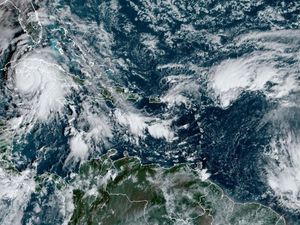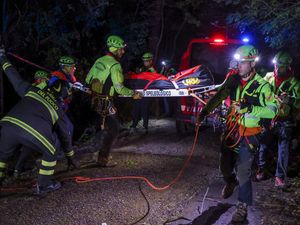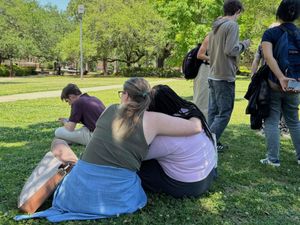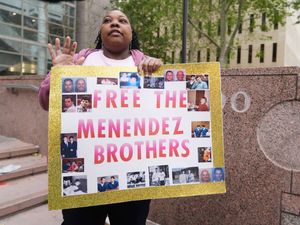Hurricane Rafael strengthens to powerful Category 3 storm as it slams into Cuba
Forecasters warned the could bring “life-threatening” storm surges, winds and flash floods.

Hurricane Rafael has made landfall in Cuba as a powerful Category 3 hurricane, shortly after powerful winds knocked out the country’s power grid.
Forecasters warned Rafael could bring “life-threatening” storm surges, winds and flash floods to western areas of the island after it knocked out power and dumped rain on the Cayman Islands and Jamaica the day before.
The storm was 40 miles south-southwest of Havana on Wednesday. It had maximum sustained winds of 115mph and was moving north west at 14mph, according to the National Hurricane Centre.
The storm is bad news for Cuba, which is struggling with devastating blackouts while recovering from another hurricane two weeks ago that killed at least six people in the eastern part of the island.
On Wednesday, the government issued an alert for the incoming storm while crews in Havana worked to fortify buildings and clear scraps from seaside areas in anticipation of flooding.
Classes and public transport were suspended on parts of the island and authorities cancelled flights in and out Havana and Varadero. Meanwhile, thousands of people in the west of the island were evacuated as a prevention measure.
Forecasters expect the storm to weaken over Cuba before emerging in the south-eastern Gulf of Mexico as a hurricane.
The US State Department issued an advisory for Cuba on Tuesday afternoon, offering departure flights to non-essential staff and American citizens, and advising others to “reconsider travel to Cuba due to the potential impact of Tropical Storm Rafael”.
On Tuesday morning, the Cuban Civil Defence called on Cubans to prepare as soon as possible, because when the storm makes landfall “it’s important to stay where you are”.
A hurricane warning was in effect on Wednesday for the provinces of Pinar del Rio, Artemisa, La Habana, Mayabeque, Matanzas and the Isle of Youth.
A tropical storm warning was in effect for the provinces of Villa Clara, Cienfuegos, Sancti Spiritus and Ciego de Avila, as well as the lower and middle Florida Keys from Key West to west of the Channel 5 Bridge, and Dry Tortugas.
The storm on Tuesday knocked out power in parts of Jamaica and unleashed flooding and landslides. The Jamaica Public Service, the island’s electricity provider, said in a statement late on Tuesday that impassable roads were preventing crews from restoring power in some areas.
Power outages were reported across the Cayman Islands after a direct hit late on Tuesday, and schools remained closed on Wednesday.
“While conditions have improved on Grand Cayman, residents are advised to exercise extreme caution on the roads and near coastlines as rough seas and residual flooding risks may persist,” the government said in a statement.
Heavy rainfall was also expected to spread north into Florida and nearby areas of the south-east US during the middle to late part of the week.
The hurricane centre predicted storm surges in Florida could reach up to 3ft in Dry Tortugas and between 1ft and 2ft in the Lower Florida Keys. A few tornadoes were also expected on Wednesday over the Keys and south-western Florida.
Rafael is the 17th named storm of the season.
The National Oceanic and Atmospheric Administration predicted the 2024 hurricane season was likely to be well above average, with between 17 and 25 named storms. The forecast called for as many as 13 hurricanes and four major hurricanes.
An average Atlantic hurricane season produces 14 named storms, seven of them hurricanes and three major hurricanes.





